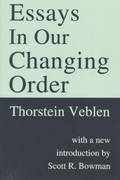no special format
QUESTION 3. Identify each of the following (A-D) using one of the 4 market structures. Each market structure is only used once. Part A. There are many small towns across the country that have a single gas station and a single grocery. A 1. Market Structure: A 2 List two characteristics of this market structure other than those related to price/output. A 3 Describe how this type of rm sets price and output. A 4 Draw the appropriate graph to illustrate a loss for this type of rm. Be sure to label! Shade the area of the loss. Part B. Farms in southern California grow strawberries, alongside many competitors. B 1. Market Structure: B 2 List two characteristics of this market structure other than those related to price/ output. B 3 Describe how this type of firm sets price and output. B 4 Draw the appropriate graph to illustrate a prot for this type of rm. Be sure to label! Shade the area of the prot. Part C. Small local diners in a small city (population greater than 25,000 but less than 40,000). C 1 Market Structure: _ C 2 List two characteristics of this market structure other than related to price/output. C 3 Describe how this type of rm sets price and output. C 4 Draw the appropriate graph to illustrate a prot for this type of rm. Be sure to label! Shade the area of the prot. Part D. Verizon, AT&T, Sprint, T-Mobile, Spectrum D 1. Market Structure: D 2 List two characteristics of this market structure other than related to price/output. D 3 Describe how this industry sets price and output. D 4 Could regulation help this market move toward the efficiencies of perfect competition? QUESTION 4. Part A. A1 What is the law of demand? A2 What is the law of supply? Part B. According to Lindsay Campbell, author of an article titled, \"The Great Cheese Emergency\" from the online resource, Modern Farmer, \"mountains of specialty cheese have been piling up in warehouses in recent months ...\" These are nmaril small-scale roducers. B1. What is the market structure for specialty cheeses? (It is not perfect competition, nor is it monopoly.) What are your reasons for your choice? B2. Draw the market for specialty cheeses according to your answer for Part (B1). Explain the elasticity of demand for specialty cheeses. Incorporate in your market drawing. B3. Explain the effects of restaurants closing their doors and other traditional markets no longer purchasing specialty cheeses ON THE MARKET FOR SPECIALTY CHEESES. What is the determinant in play? This is 1 CHANGE in the market. B4. According to the article, some sellers have refocused their production. \"Instead of selling six main products of cheese .. . (they have) focused production to three popular options at smaller retail sizes. Making use of their ecommerce story .. . put together tasting kits available for purchase online, which has resulted in a good boost.\" Yet, in May sales dropped 40% Which is less than the 65% loss in April. Explain Why you think this plan will or will not offset the changes from PART C. B5. It is probable that the specialty cheese industry saw a loss of a number of smaller producers due to short run losses. Fewer customers purchasing their product. What is the impact ON THE MKT FOR SPECIALTY CI-IEESES? What is the determinant at work here? This is a 2"d CHANGE. B6. There are two shifts at play in this market. On the rst graph you drew (Part A), draw the changes using dashed lines or different colours. Be sure to label the new curves as D1 and 51. B7. What happens to price and output given the two changes (C) and (E)








